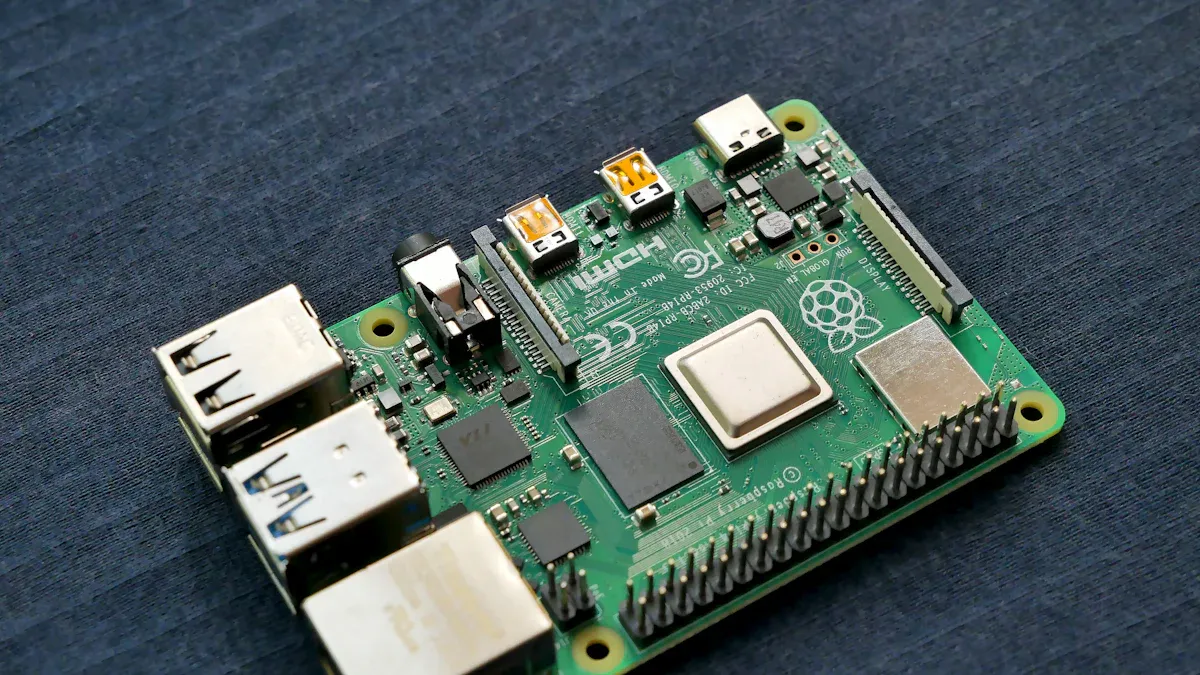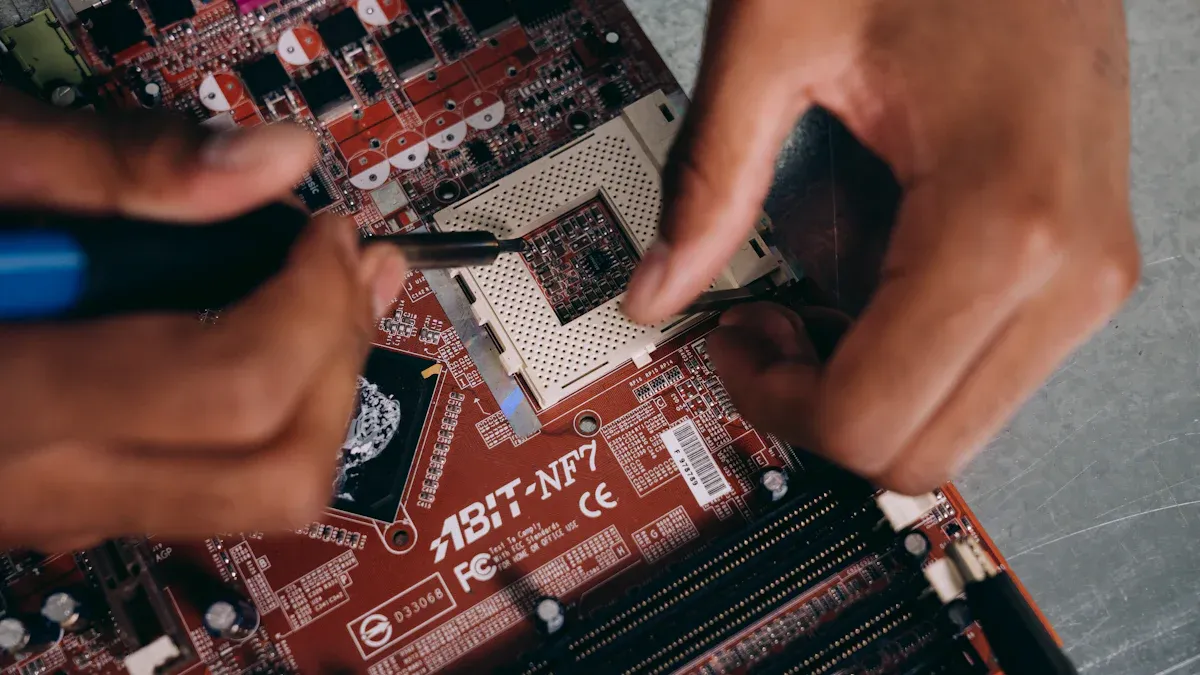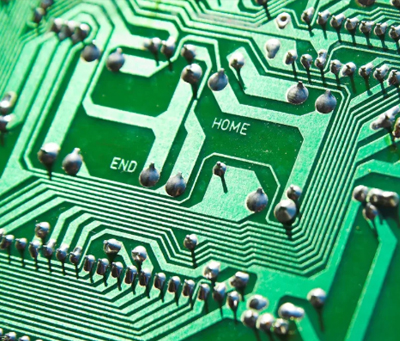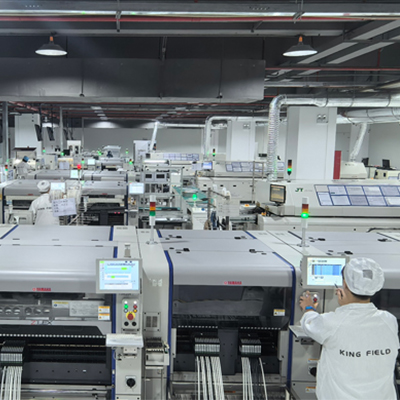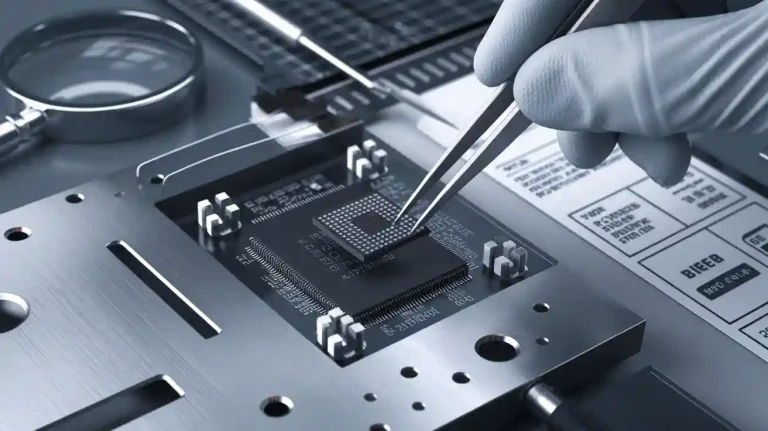How to Design Reliable PCBs for Automotive Motor Control Systems
Reliability is the cornerstone of designing PCBs for automotive motor control systems. In this high-stakes domain, a single failure can compromise safety and performance. You need to ensure that every design decision aligns with the stringent demands of the automotive industry.
In the automotive industry, electromagnetic compatibility (EMC) is crucial due to the vulnerability of onboard electronics to electromagnetic interference. A manufacturer of electric vehicles faced EMI challenges in their onboard charger and successfully implemented advanced filtering techniques and shielding to mitigate these issues.
Key industry trends further underline the significance of reliable designs:
- The automotive PCB market is expanding due to the rising demand for connectivity in vehicles, driven by trends towards smart vehicles with advanced features.
- Economic fluctuations and consumer preferences influence the demand for automotive PCBs, making adaptability a critical factor in design.
As you tackle the challenges of Automobile Motor PCB design, you must account for factors such as electromagnetic interference, thermal management, and durability to achieve optimal performance in demanding environments.
Key Takeaways
- Make sure PCBs are reliable for safe and good performance in cars.
- Follow rules like ISO 26262 and AEC-Q100 to meet safety and quality needs.
- Use good cooling methods to stop parts from overheating or breaking.
- Test carefully, including stress tests, to find problems early.
- Keep signals strong by shortening trace paths and using better communication methods.
Design Requirements for Automobile Motor PCB
Automotive Industry Standards
When designing an automobile motor PCB, you must adhere to strict industry standards to ensure safety, reliability, and performance. These standards provide guidelines for manufacturing, testing, and quality assurance, which are critical in automotive applications. Here are some key requirements you should consider:
- Grounding Strategies: Implement solid ground planes and star grounding to maintain signal integrity and enhance safety.
- Design for Manufacturing (DFM) and Assembly (DFA): Follow PCB fabrication guidelines and optimize designs for automated assembly processes.
- Reliability and Testing: Incorporate component derating, thermal cycling tests, and EMI/EMC testing to meet safety-critical performance benchmarks.
- Safety and Compliance: Ensure your design complies with ISO 26262 and AEC-Q100 standards, which are essential for automotive PCBs.
- Advanced Technologies: Integrate modern technologies to support electrification, autonomous driving, and connected vehicle systems.
The following table highlights some of the most critical standards you need to meet:
| Standard | Description |
|---|---|
| IPC-6012E | Specifies design and development requirements for rigid PCBs, including quality acceptance criteria. |
| IPC-6012EA | An addendum for automotive applications, focusing on visual inspections and testing. |
| IPC-6013E | Covers flexible and rigid-flex PCBs, which are increasingly used in automotive systems. |
| IATF 16949:2016 | A quality management system standard ensuring quality across the automotive supply chain. |
| AEC | Defines quality requirements for electronic components, including testing procedures. |
By following these standards, you can ensure your automobile motor PCB meets the rigorous demands of the automotive industry.
Environmental and Operational Challenges
Automotive motor PCBs operate in harsh environments, which pose significant challenges to their design and performance. You must account for these factors to ensure long-term reliability and functionality. Some of the most common challenges include:
- Temperature Extremes: Automotive PCBs must withstand a wide range of temperatures, from sub-zero conditions to extreme heat near the engine.
- Vibration and Shock: Constant exposure to vibrations and mechanical shocks can lead to component failure or solder joint fatigue.
- Humidity and Corrosion: Moisture and corrosive elements can degrade PCB materials and compromise electrical performance.
- Electromagnetic Interference (EMI): High levels of EMI in automotive environments can disrupt the operation of sensitive electronic components.
- Chemical Exposure: PCBs may come into contact with oils, fuels, and cleaning agents, which can damage the board if not properly protected.
The table below outlines some of the key standards that address these challenges:
| Standard | Description |
|---|---|
| IPC-A-600G | Defines requirements for PCB appearance, dimensions, and surface characteristics. |
| IPC-6012 | Specifies quality requirements for rigid and rigid-flex PCBs, including materials and performance. |
| ISO 26262 | Focuses on functional safety, imposing strict safety requirements throughout the automotive lifecycle. |
| AEC-Q100/AEC-Q200 | Covers reliability and robustness testing for automotive electronic components. |
| JESD22-A100 | Provides guidelines for environmental stress testing, including humidity and temperature tests. |
To address these challenges, you should select durable materials, implement robust thermal management techniques, and design for EMI shielding. By doing so, you can create a PCB that performs reliably under the demanding conditions of automotive applications.
Best Practices for Automobile Motor PCB Design
Material Selection for Durability
Selecting the right materials is crucial for ensuring the durability of your Automobile Motor PCB. You should prioritize materials that can withstand the harsh conditions typical in automotive environments. For instance, materials must endure temperature extremes, vibrations, and exposure to chemicals. Standards like ISO 26262 and IPC-6012DA guide you in choosing materials that enhance reliability and minimize failures. These standards ensure that your PCBs maintain consistent performance under stress, promoting longevity.
| Standard | Purpose | Impact on Durability and Reliability |
|---|---|---|
| ISO 26262 | Ensures rigorous safety analysis and hazard identification | Promotes fail-safe systems, reducing safety-critical failures. |
| IPC-6012DA | Provides requirements for manufacturing and performance of rigid PCBs | Ensures consistent reliability and robustness, minimizing failures. |
| AEC-Q100 to AEC-Q200 | Establishes testing protocols for electronic components | Ensures consistent performance under stress, enhancing longevity. |
Layer Stack-Up and Signal Integrity
Proper layer stack-up is essential for maintaining signal integrity in your Automobile Motor PCB. You should design your PCBs to minimize radiation and avoid long trace lengths. This approach helps reduce electromagnetic interference (EMI) and ensures reliable signal transmission. Including EMC considerations from the earliest design stages is vital. Optimize component selection for lower emissions and higher immunity to achieve the best results.
| Category | Standards |
|---|---|
| Emission Standards | CISPR 12, EN 55012, CISPR 25, EN 55025 |
| Immunity Standards | ISO 11451-2, ISO 11452-2, ISO 11451-3, ISO 11452-3, ISO 11451-4, ISO 11452-4, ISO 10605, ISO 11452-5, ISO 11452-7, ISO 11452-9 |
Conducting pre-compliance EMC testing is crucial. This proactive approach helps identify potential EMC issues early in the design process, avoiding product failures and reducing the need for expensive re-testing after design completion.
Thermal Management Techniques
Effective thermal management is critical for the performance and reliability of your Automobile Motor PCB. You should employ a combination of empirical data and simulations to develop robust thermal management solutions. Empirical data, obtained through experiments under specific conditions, provides reliable insights into material behavior. Simulations, on the other hand, model thermal distribution in complex systems, speeding up processes and reducing costs.
| Evidence Type | Description |
|---|---|
| Empirical Data | Obtained through experiments under specific temperature and loading conditions, providing reliable results by observing material behavior. |
| Simulations | Conducted using computer-aided analysis to model thermal distribution in complex systems, speeding up processes and reducing costs. |
| Combined Approach | The integration of empirical data and simulations enables the development of effective thermal management solutions. |
By integrating these techniques, you can ensure that your PCBs operate efficiently, even under extreme thermal stress, enhancing their overall reliability.
Electrical Design Considerations
Power Distribution and Grounding
Effective power distribution and grounding are essential for the reliability of your Automobile Motor PCB. A well-designed power distribution network ensures consistent voltage levels across all components, minimizing the risk of power fluctuations. You should use wide power traces or planes to reduce resistance and voltage drops. Additionally, decoupling capacitors placed near power pins can stabilize voltage and filter out noise.
Grounding strategies play a critical role in maintaining signal integrity. Implementing a solid ground plane reduces impedance and provides a low-resistance path for return currents. Star grounding, where all ground connections converge at a single point, can further enhance performance by minimizing ground loops. These techniques ensure stable operation, even in high-current automotive environments.
Noise Reduction and EMI Shielding
Noise reduction and EMI shielding are vital for preventing interference in sensitive circuits. Laboratory tests have demonstrated that hybrid ferrite and copper solutions, as well as permalloy materials, offer effective EMI shielding. Grounding the permalloy material significantly improves shielding performance, particularly in the 55 to 80 MHz frequency range. Material selection and thickness also influence the effectiveness of EMI suppression.
To further reduce noise, you should isolate high-frequency signals from low-frequency ones and use differential signaling where possible. Shielded cables and enclosures can also block external interference. These measures ensure that your PCB operates reliably in the electromagnetically noisy environment of an automobile.
Component Placement and Routing
Strategic component placement and routing improve both performance and reliability. Place high-power components away from sensitive analog circuits to minimize interference. Group related components together to shorten trace lengths and reduce parasitic effects. Routing power and ground traces as pairs can also help maintain signal integrity.
Quantitative testing methodologies highlight the benefits of automation in component placement and routing. Automating repetitive tasks reduces manual errors and ensures consistency. Simulation tools, such as SPICE, allow you to test signal and power integrity before creating physical prototypes. These strategies streamline the design process and enhance the overall reliability of your PCB.
Testing and Validation Processes
Simulation and Prototyping
Simulation and prototyping are essential steps in ensuring the reliability of an Automobile Motor PCB. By leveraging simulation tools, you can predict the performance of your design under various conditions without the need for physical prototypes. This approach saves time and resources while identifying potential issues early in the design process. Design for Test (DFT) principles further enhance this phase by optimizing PCBs for specific testing methods. DFT simplifies the detection and localization of failures, reducing testing time and costs while improving prototype reliability.
Prototyping complements simulations by providing a tangible model for testing. It allows you to validate the design’s functionality and manufacturability. Early testing through prototypes offers several benefits:
- Helps identify bugs, ensuring the PCB functions as intended.
- Saves time by addressing major issues before full-scale production.
- Reduces costs by preventing the manufacturing of faulty products.
- Enhances safety by ensuring the PCB meets performance standards.
| Test Type | Purpose |
|---|---|
| Sinusoidal vibration test | Simulates repetitive mechanical forces to identify resonant frequencies that may amplify stress. |
| Random vibration test | Applies a spectrum of frequencies to simulate real-world scenarios experienced in vehicles. |
| Shock testing | Simulates sudden impacts to assess the board’s ability to survive abrupt mechanical forces. |
Environmental Stress Testing
Environmental stress testing evaluates the durability of your PCB under extreme conditions. Techniques like the Biased Highly Accelerated Stress Test (BHAST) expose the board to accelerated stress factors, including temperature, humidity, and electrical loads. This process helps identify potential weaknesses or failures before the product reaches the market.
Accelerated Life Testing (ALT) is another critical method. It predicts the lifespan of a PCB by simulating aging processes. ALT also identifies design flaws, material weaknesses, or manufacturing defects. These insights allow you to refine your design and materials, improving overall reliability. By conducting these tests, you can ensure your PCB withstands the harsh environments typical of automotive applications.
Compliance Testing for Automotive Standards
Compliance testing ensures your PCB meets the stringent standards required for automotive applications. Standards like ISO 26262 and AEC-Q100 focus on functional safety and reliability. These tests validate that your design adheres to industry regulations, ensuring safety and performance.
You should conduct electromagnetic compatibility (EMC) tests to verify that your PCB operates without causing or being affected by electromagnetic interference. Additionally, thermal cycling tests assess the board’s ability to endure temperature fluctuations. Meeting these compliance requirements not only enhances reliability but also builds trust with customers and stakeholders.
Avoiding Common Mistakes in Automobile Motor PCB Design
Overlooking Thermal Management
Neglecting thermal management can severely impact the performance and reliability of your Automobile Motor PCB. Excessive heat accelerates material degradation, weakens solder joints, and reduces the lifespan of components. It also alters electrical properties, leading to voltage drops and signal distortion. Prolonged exposure to high temperatures can even cause thermal runaway, posing safety risks.
To illustrate the consequences of poor thermal management, consider the following:
| Consequence | Description |
|---|---|
| Reduced Component Lifespan | Excessive heat leads to the breakdown of electronic components. |
| Degraded Electrical Properties | Increased resistance causes voltage drops and signal distortion. |
| Thermal Expansion and Contraction | Temperature changes induce mechanical stress, leading to cracks and delamination. |
| Increased Signal Loss | Heat worsens signal loss in high-speed circuits, affecting communication reliability. |
| Reduced Efficiency | High temperatures decrease efficiency, increasing power consumption. |
| Safety Concerns | Excessive heat can lead to thermal runaway, posing fire risks. |
To mitigate these risks, you should prioritize robust thermal management strategies. Use heat sinks, thermal vias, and high-conductivity materials to dissipate heat effectively. Simulations and empirical testing can help you identify potential hotspots and optimize your design.
Ignoring Signal Integrity
Signal integrity issues often arise when high-speed signals encounter interference or degradation. Overlooking this aspect can lead to erratic behavior, data corruption, or even complete system failure. Heat exacerbates these problems by increasing signal loss and distorting waveforms.
To maintain signal integrity, you should minimize trace lengths and avoid sharp bends in routing. Differential signaling and proper impedance matching can further reduce noise and improve reliability. Shielding sensitive circuits and isolating high-frequency signals from low-frequency ones also play a critical role. By addressing these factors, you ensure that your PCB performs reliably in demanding automotive environments.
Skipping Comprehensive Testing
Comprehensive testing is non-negotiable in automotive applications. Skipping this step can result in costly recalls, reduced reliability, and damage to your brand’s reputation. Testing benchmarks like thermal cycling and vibration tests simulate real-world conditions, ensuring your PCB can withstand the rigors of automotive use.
Thorough testing offers several benefits:
- Cost Savings: Early detection of issues reduces the risk of expensive repairs or replacements.
- Enhanced Reliability: Only defect-free boards reach the market, ensuring consistent performance.
- Improved Brand Reputation: Reliable products build customer trust and loyalty.
You should also conduct environmental stress tests, such as the Biased Highly Accelerated Stress Test (BHAST), to identify potential weaknesses. These tests validate your design’s durability and compliance with industry standards, ensuring long-term reliability.
Adhering to industry standards and best practices is essential for designing reliable Automobile Motor PCBs. Compliance with regulations like EMC/EMI and automotive-grade requirements ensures market acceptance and customer satisfaction. Standards such as IPC-6011, IPC-6012D, and IPC-6013D provide critical guidelines for achieving reliability and dimensional accuracy in automotive applications.
Thorough testing and validation processes play a pivotal role in ensuring long-term reliability. By conducting simulations, environmental stress tests, and compliance checks, you can identify potential issues early and refine your design. These steps not only enhance performance but also build trust with stakeholders, ensuring your PCB meets the rigorous demands of the automotive industry.
FAQ
What are the most critical standards for automotive PCB design?
You should prioritize standards like ISO 26262 for functional safety, IPC-6012DA for rigid PCB reliability, and AEC-Q100 for component testing. These ensure your design meets safety, durability, and performance benchmarks required in automotive applications.
How can you improve thermal management in automotive PCBs?
Use heat sinks, thermal vias, and high-conductivity materials to dissipate heat effectively. Simulations and empirical testing help identify hotspots. Combining these strategies ensures your PCB operates reliably under extreme thermal stress.
Why is signal integrity important in automotive PCBs?
Signal integrity ensures reliable communication between components. Poor signal integrity can cause data corruption or system failure. Minimize trace lengths, avoid sharp bends, and use differential signaling to reduce noise and maintain performance.
What is the role of environmental stress testing?
Environmental stress testing evaluates your PCB’s durability under extreme conditions like temperature, humidity, and vibration. Techniques like BHAST and ALT identify weaknesses, ensuring your design withstands harsh automotive environments.
How does compliance testing benefit your PCB design?
Compliance testing ensures your PCB meets industry standards like ISO 26262 and AEC-Q100. It validates safety, reliability, and performance, building trust with stakeholders and ensuring market acceptance.


